






Respect for the faith of sincere believers cannot be allowed either to block or deflect the investigation of the historian ...
Maxime Rodinson
PART 1. INTRODUCTION
PART 2. BACKGROUND
PART 3. A QUESTION OF LANGUAGE
PART 4. SOURCES OF THE KORAN: ESSENIAN, CHRISTIAN, COPTIC
PART 5. SURAS, SURAS, SURAS
PART 6. EMENDATIONS, INTERPOLATIONS
PART 7. RICHARD BELL: INTRODUCTION AND COMMENTARY
PART 8. POETRY AND THE KORAN
PART 9. MANUSCRIPTS
APPENDICES
 y wish, in the first part of the introduction, is to dispel the sacred aura surrounding the Arabic language, the Arabic script, and the Holy Arabic Scripture-to desacralize, if I may coin a termi- and put them into their historical, linguistic, and Middle Eastern sectarian milieu; to show that each-language, script and text-is inexorably related to the Semitic, Aramaic/Nabataean, and Monotheist background respectively, and that each can and must be explained by the normal mechanisms of human history.
y wish, in the first part of the introduction, is to dispel the sacred aura surrounding the Arabic language, the Arabic script, and the Holy Arabic Scripture-to desacralize, if I may coin a termi- and put them into their historical, linguistic, and Middle Eastern sectarian milieu; to show that each-language, script and text-is inexorably related to the Semitic, Aramaic/Nabataean, and Monotheist background respectively, and that each can and must be explained by the normal mechanisms of human history.
In the second part I have tried to give specific examples of the obscurities and grammatical and logical difficulties of the Koran, and then argued that the ninth-century explosion of Muslim scholarly activity-in the composition of Arabic grammars, the exegesis of the Koran, the elaboration of the theories of abrogation and the occasions of revelations (asbab al-nuzul), the fabrication of hadith and the details of the life of the Prophet-revealed the Muslims' ignorance of the meaning of the Koran, and that, indeed, this activity was designed to make sense of this opaque text.
I then briefly look at the various answers proposed by non-Muslim scholars-such as Casanova, Luling, and Luxenberg-to explain the source of the Koranic difficulties.
I end with a plea for a long overdue examination of the methodological assumptions of the Islamologists, suggesting that the latter could learn some lessons from the work of a new generation of biblical scholars who are much more open to the methods of other disciplines like anthropology, sociology, social history, linguistics, and literary criticism.
The articles in this collection reflect the above concerns. Nevo gives the archaeological data that seem to contradict the traditional accounts of the rise of Islam. The essays in part 3 discuss matters of language: the growth of Classical Arabic, and the importance of Aramaic for our understanding of the Koran. The scholars in part 4 give the Qumranian and Christian background, proposing possible Essenian, Coptic, and other Christian influence on the text of the Koran; while the authors in part 5 not only point to the difficulties in various suras, but also suggest, rejecting the traditional accounts, possible alternative interpretations. The Islamologists in part 6, in an attempt to elucidate some of the obscurities of the Koran show that only emendations can give us a comprehensible text. In part 7, substantial passages from Richard Bell's Introduction to the Qu'ran and his Commentary to Sura II underline the nature of the difficulties, and provide valuable exegesis. What Bell says of poetry in the Koran should be particularly helpful for understanding Rudolf Geyer's article in the following section. Finally, A. Grohmann discusses Koranic manuscripts, and Gerd Puin gives us a preliminary discussion of the finds in the Yemen.
The articles by Michael Schub (5.9, 5.10), C. Heger (5.8), and Ibn Rawandi (8.3) are published for the first time, while the articles by M. Philonenko (4.3, 4.4), Raimund Kobert (4.7, 4.8, 4.9), Claude Cahen (5.3), J. Barth (6.1), A. Fischer (6.2, 6.3), Rudolf Geyer (8.1), and J. Wellhausen (8.2) are here translated into English for the first time.
A work such as the present compilation owes it very existence to the research of others. We are all heavily indebted to the great scholars of the past-Barth, Fischer, Bell, et al.-represented here. But I also received help of a more personal kind from contemporary scholars, without which this anthology would not have been possible. As with my previous book, I am truly touched by all the help accorded me: at my first steps in Syriac and Hebrew; at the translation and transliteration of at least four Semitic and two Indo-European languages; at the providing of difficult-to-obtain articles, and so on. I was particularly grateful for the translations from the rather abstruse German. It is not only a duty but a pleasure to acknowledge all this kindness and generosity. I should have liked to have given the names of these scholars-indeed, it would make an impressive list of "who's who" in the world of Islamic studies, from professors at distinguished universities in seven countries to Dominican and Capuchin friars. Unfortunately, as on previous occasions, it was thought prudent to protect them by not mentioning them, since Ibn Warraq is still, "mad, bad, and dangerous to know." While naming names might enhance my credibility, it may tarnish theirs, and endanger them physically. However, there is someone I can thank by name, since he writes under a protective pseudonym, Ibn Rawandi (il miglior fabbro). Ibn Rawandi helped me in countless ways, providing me with books, articles, and advice, for which I am truly beholden; but above all for accepting to write an essay especially for this collection.

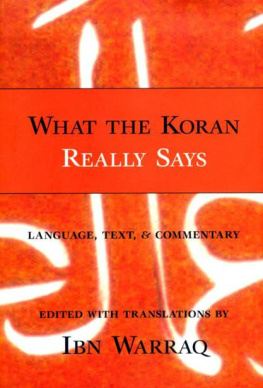
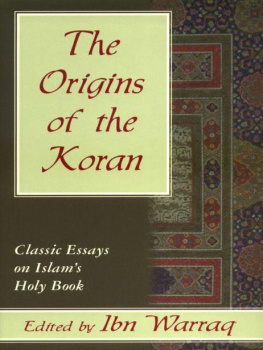
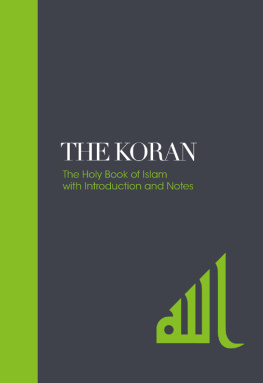


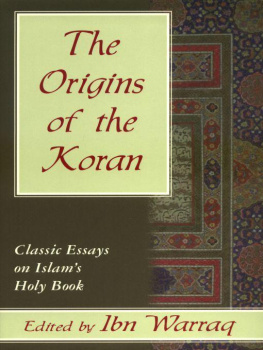
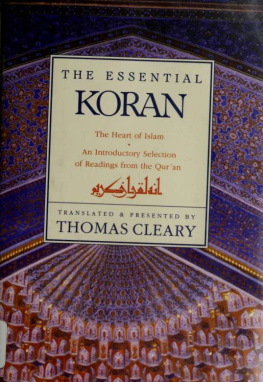

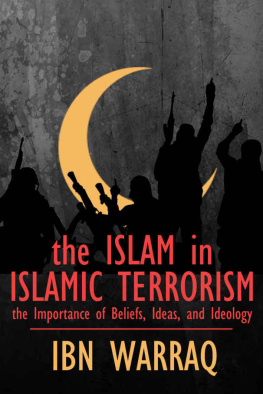










 y wish, in the first part of the introduction, is to dispel the sacred aura surrounding the Arabic language, the Arabic script, and the Holy Arabic Scripture-to desacralize, if I may coin a termi- and put them into their historical, linguistic, and Middle Eastern sectarian milieu; to show that each-language, script and text-is inexorably related to the Semitic, Aramaic/Nabataean, and Monotheist background respectively, and that each can and must be explained by the normal mechanisms of human history.
y wish, in the first part of the introduction, is to dispel the sacred aura surrounding the Arabic language, the Arabic script, and the Holy Arabic Scripture-to desacralize, if I may coin a termi- and put them into their historical, linguistic, and Middle Eastern sectarian milieu; to show that each-language, script and text-is inexorably related to the Semitic, Aramaic/Nabataean, and Monotheist background respectively, and that each can and must be explained by the normal mechanisms of human history.